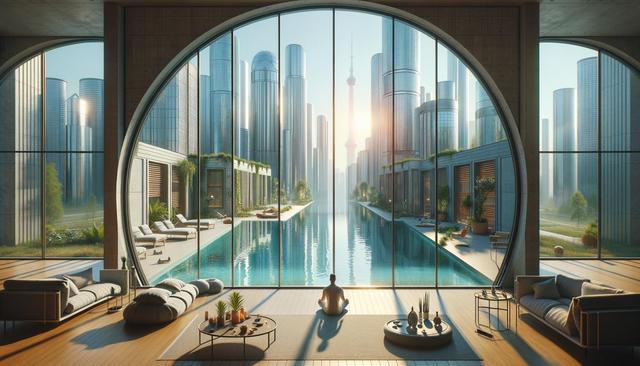
European Windows Trend 2025: How a Simple Window Upgrade Enhances Natural Light, Energy Efficiency, and Home Aesthetics
Natural Light as a Design Priority
One of the defining features of European window trends in 2025 is the emphasis on maximizing natural light. Homeowners and architects alike are prioritizing larger glass surfaces, minimalistic frames, and strategic window placement to bring more daylight into interior spaces. This approach not only enhances the visual appeal of a room but also supports mental well-being and reduces reliance on artificial lighting. With advancements in glazing technology, even expansive window designs can maintain excellent thermal performance, allowing for both beauty and functionality.
Key elements contributing to improved natural light include:
- Floor-to-ceiling windows that connect interiors to outdoor views
- Sliding and folding glass walls that blur the boundary between inside and outside
- High-transparency low-e glass that filters UV rays without compromising light
These innovations allow homeowners to create brighter and more welcoming living environments while staying energy-conscious.
Energy Efficiency Through Smart Window Technologies
European windows in 2025 are setting new standards in energy efficiency. With growing environmental awareness and tightening building regulations, energy-saving features have become essential. Multi-pane glazing systems, thermally broken frames, and smart coatings are just a few examples of how windows are evolving to minimize heat loss and optimize insulation.
Emerging technologies include:
- Triple-glazed units with inert gas fills to improve thermal resistance
- Smart glass that adjusts tint automatically based on sunlight intensity
- Passive house-certified frames that maintain airtightness and prevent drafts
Such advancements help reduce heating and cooling needs, making window upgrades a long-term investment in both comfort and sustainability. These features are especially beneficial in regions with variable climates, where maintaining indoor temperature is crucial for energy conservation.
Minimalist Frames and Slim Profiles
Another noticeable trend in European windows is the shift toward minimalist aesthetics. Slim profiles and sleek materials are gaining popularity, offering a refined look that complements modern and traditional architecture alike. Aluminum, wood-aluminum hybrids, and composite materials are among the top choices due to their strength and design flexibility.
Benefits of minimalist window frames include:
- Increased glass-to-frame ratio for better views and daylight access
- Improved visual cohesion with contemporary architectural styles
- Lower visual clutter, enhancing the sense of space
This trend reflects a broader movement toward simplicity and clarity in home design. While the frame becomes less visually dominant, its performance remains robust, ensuring that aesthetics do not compromise functionality.
Sustainable Materials and Eco-Conscious Manufacturing
In 2025, sustainability is not just a buzzword but a guiding principle in window design and production. European manufacturers are increasingly adopting eco-friendly practices, from sourcing responsibly harvested wood to using recycled aluminum and low-impact coatings. The goal is to reduce the environmental footprint of window systems without sacrificing performance.
Key sustainability practices include:
- Use of FSC-certified timber for wooden frames
- Recyclable materials in both frame and glazing components
- Water-based paints and finishes that emit fewer VOCs
These considerations make it easier for homeowners to make environmentally responsible choices when upgrading their windows. Additionally, longer product lifespans and modular designs contribute to reduced waste and easier maintenance over time.
Blending Function with Aesthetic Value
European windows in 2025 are increasingly designed to serve both practical and visual purposes. Beyond energy efficiency and daylight, windows are now integral to a home’s exterior style and curb appeal. Shapes, finishes, and customization options have expanded significantly, allowing homeowners to tailor their window choices to the specific character of their property.
Popular design features include:
- Custom color finishes to match or contrast with façade tones
- Decorative glazing patterns for added privacy and style
- Architectural shapes such as arched or asymmetrical frames
These design-forward elements ensure that windows contribute meaningfully to the overall aesthetic of a home. Whether restoring a historic property or building a modern residence, the latest window trends accommodate diverse architectural visions while meeting high performance standards.
Conclusion: Choosing Windows with Vision
As homeowners look ahead to 2025 and beyond, European window trends offer a thoughtful blend of innovation, efficiency, and design. A simple window upgrade can dramatically transform how a home functions and feels, from brighter interiors to lower energy bills and enhanced curb appeal. By embracing these developments—such as minimalist profiles, smart technologies, and sustainable materials—homeowners position themselves for a future that values both comfort and environmental responsibility. Exploring these smart window solutions is an investment in both lifestyle and long-term value.